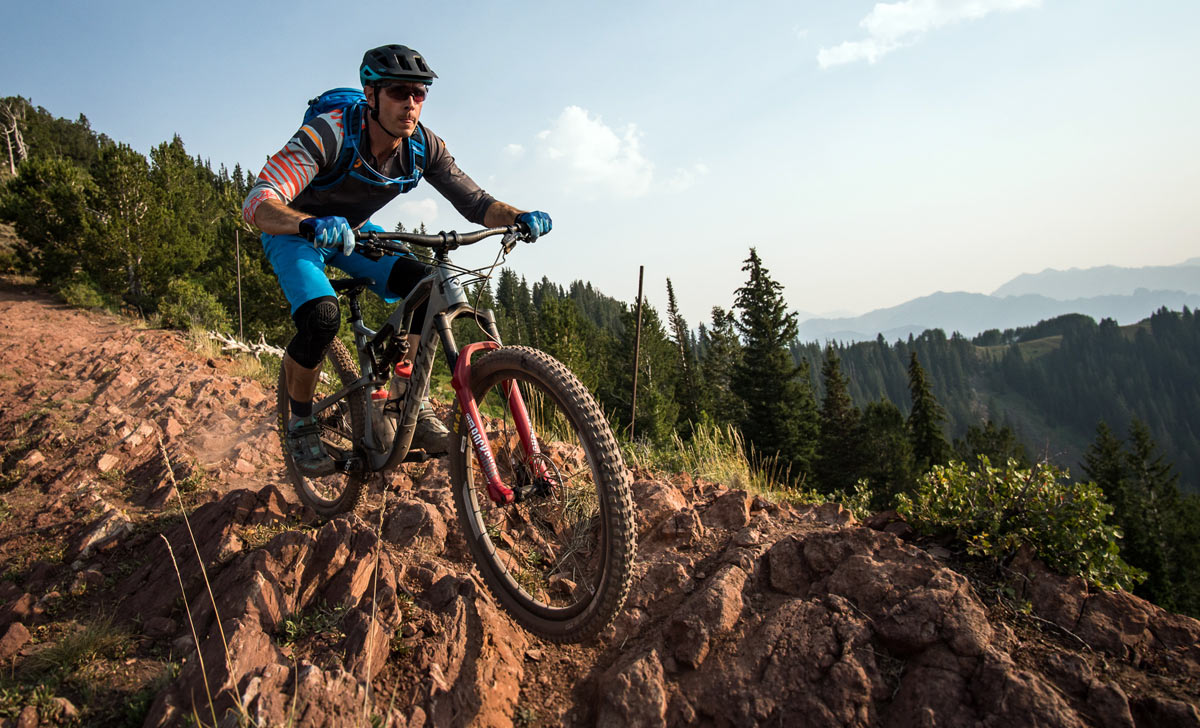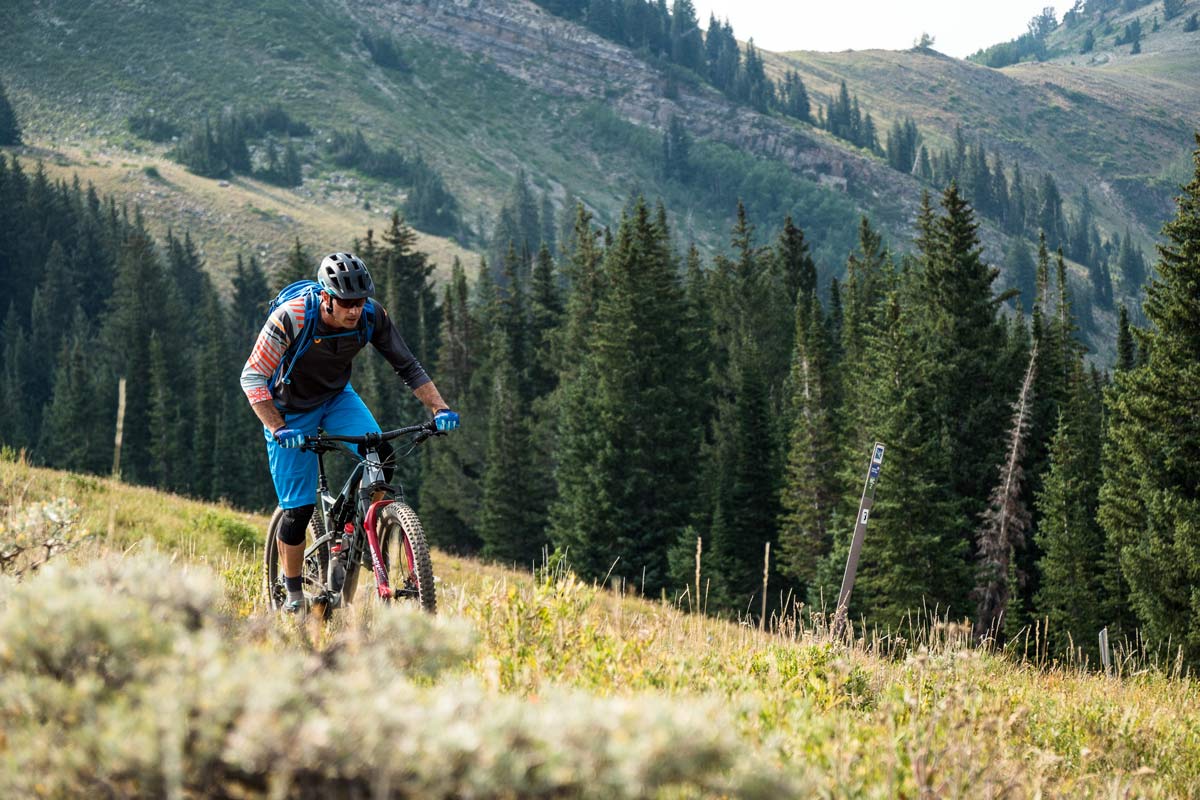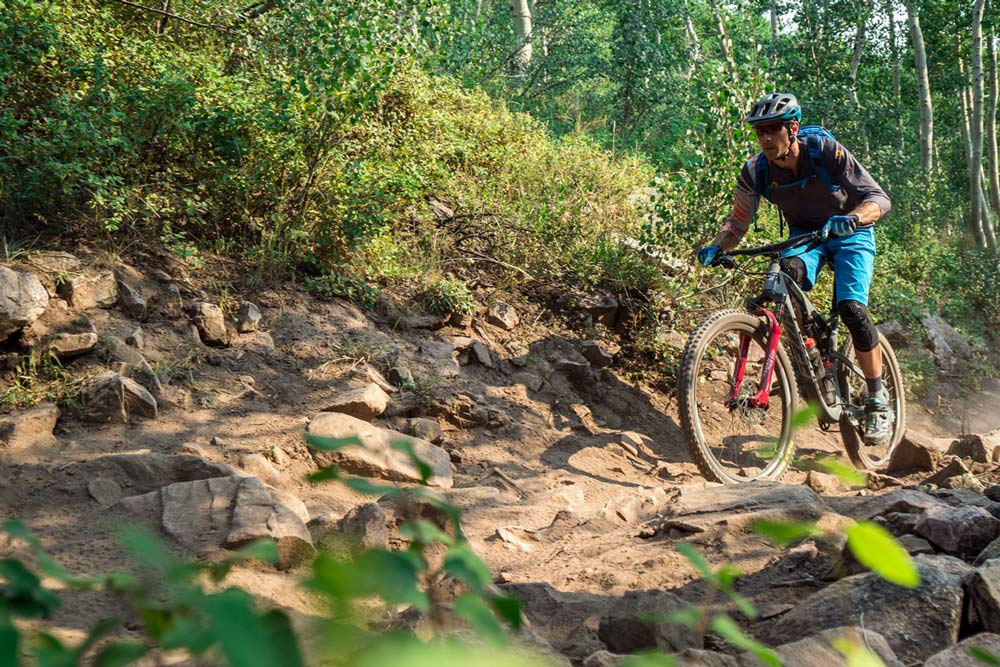Fezzari’s first long travel 29er, the La Sal Peak, took a slightly different approach to creating a bike that could handle the ups, the downs, and everything in between. It has the somewhat-standard-for-the-category 150mm rear travel with a 160mm fork, and appropriately slack head angle. But as your eyes move backward, the geometry starts looking a little weird…until you ride it.
Video Overview
Watch to the end for a couple of slo-mo takes showing suspension movement.
Riding Impressions
With an effective 78º seat tube angle before sag, the bike puts you in a very upright position with a very short reach figure. Sitting on it trail side, it’s very different. Uncomfortable, almost. And that’s with the saddle slid as far back as it could safely go, and a swap to a 60mm stem (it was set up for me with a 50mm stem based on the 23-point questionnaire they use for all customers to help customize the fit). Even so, it felt weird.
Normally, I enjoy and usually do keep my saddles sitting farther forward for XC and trail riding because it keeps me over the pedals for more powerful accelerations. It also helps with climbing. And those were the reasons behind the La Sal Peak’s design, to keep the rider in a better position for climbing. Paired with a super slack head angle, though, it definitely took some getting used to.
We started the weekend with a shuttle to Deer Valley’s famed Wasatch Crest ride. Which basically starts with a climb as soon as you leave the parking lot. A climb that ends in a lung busting, super steep pitch affectionately known as Puke Hill. A climb that starts at sends you straight up about 400 vertical feet in a very short distance. Once you’ve reached 9,820 feet, the fun begins.
I’ve ridden it before, but this time felt shorter. I remembered it being much worse. Maybe I was having a good day, but I was literally on a bike within three hours of being picked up from the airport. The handling may have helped, it was easy to keep on the desired line. And I didn’t feel like I had to completely hunch over as much.
Then, on the last run of the last day, there was one final fire road climb before the single track. It was on this climb that it all came together for me and the geometry made perfect sense. A realization that could only happen after two full days of traversing and descending…
The Wasatch Crest trail is a multi-hour ride that’s mostly a mild descending traverse with a few extended climbs and technical sections. A little bit of everything that requires plenty of pedaling and rewards with plenty of smooth, flowy descending. There are a few rocky sections that don’t flow or attempt to interrupt the flow, but the La Sal Peak’s suspension minimized the disruptions and kept the bike rolling forward.
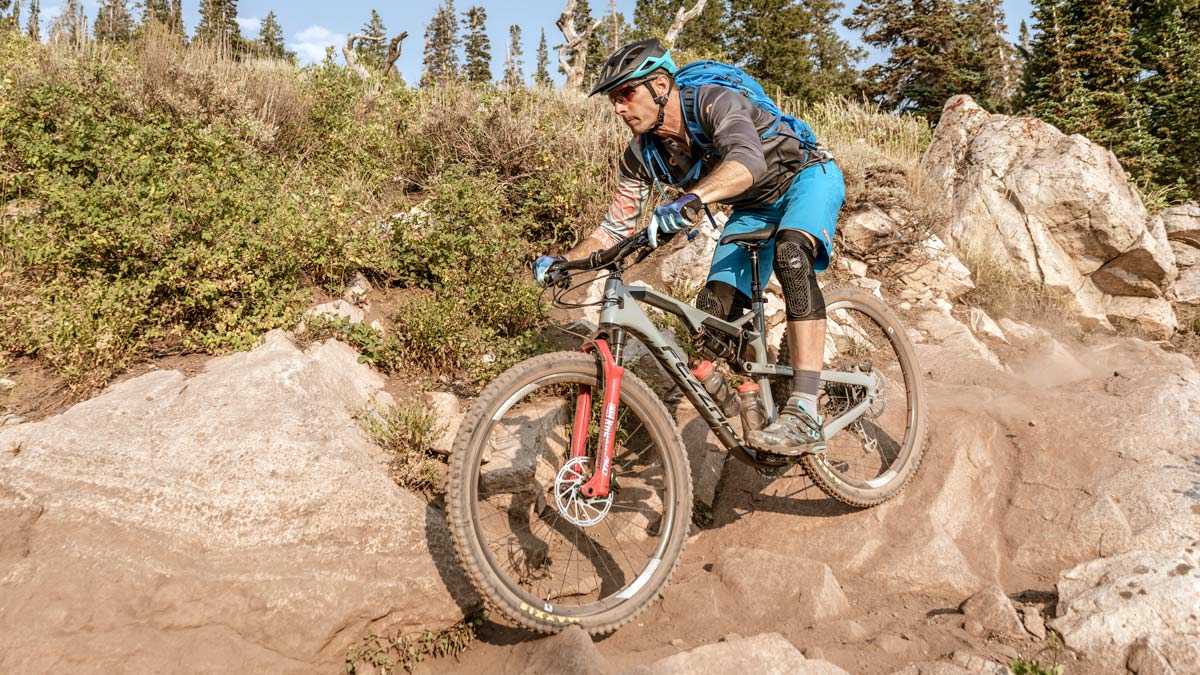
One of the more impressive features was how efficiently it pedals for a full suspension bike. And especially for a Horst Link suspension bike with a light shock tune. Fezzari’s Tyler Cloward said they designed in enough anti-squat to limit pedal-induced bobbing, and it seems to work really well.
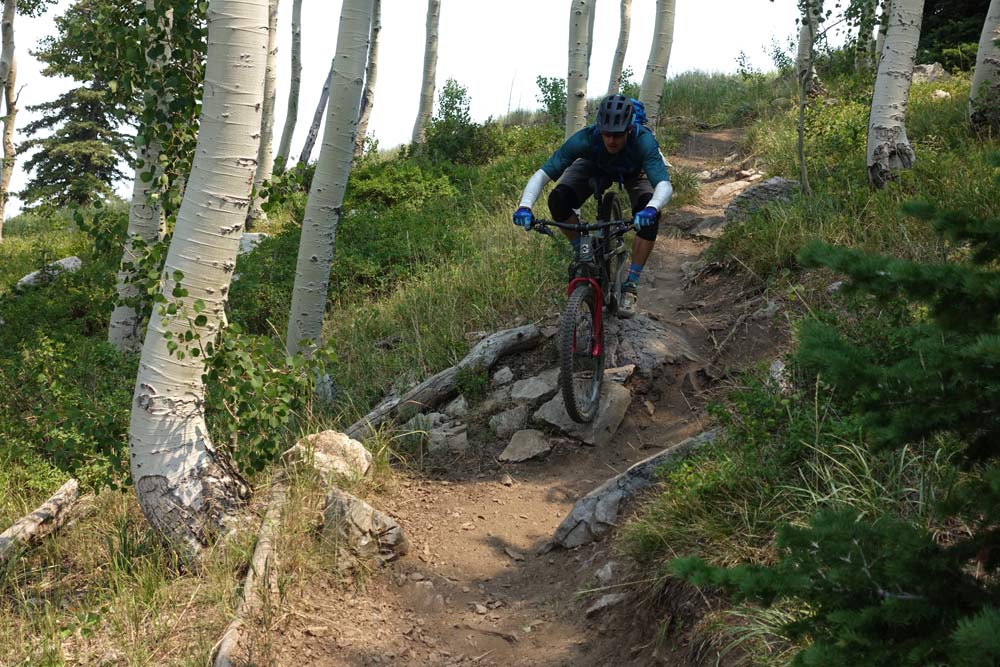
The other designed-in suspension feature is a highly progressive curve. The idea is to keep small bump sensitivity and then prevent harsh bottom out. They had all of the bikes set up with zero volume spacers for the first day, and it felt pretty good. But I’m a fan of the super supple beginning stroke, so they added a spacer to both the fork and shock for me and the second day felt better. The bike tracked extremely well and seemed to keep the tires on the ground. The only issues I had with traction came from the dry, dusty, scrabble-rock covered terrain on which nothing could bite confidently.
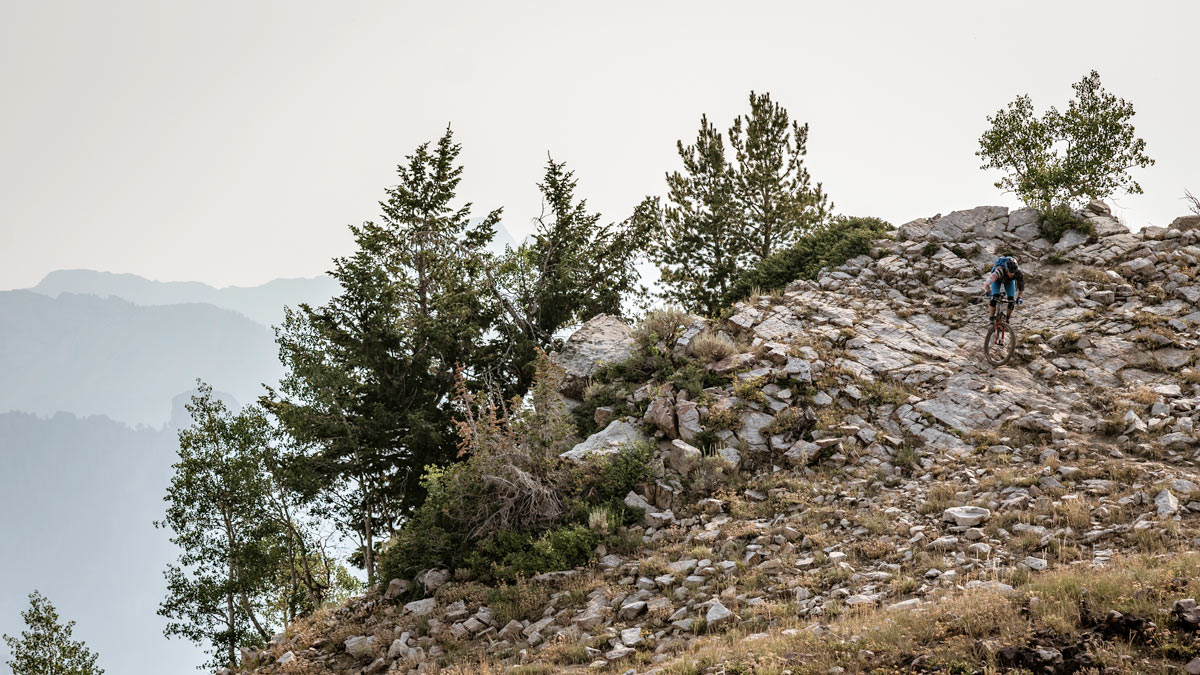
On the big hits and drops, of which there are plenty to be had on Deer Valley’s trails like Fire Swamp and Alpine Slalom, the bike offered great support. The shock’s O-ring moved almost to the bottom, showing I’d used almost all available travel, but not once did it feel harsh. The landings and fast berms showed off its ability to cushion and control big, deep compressions.
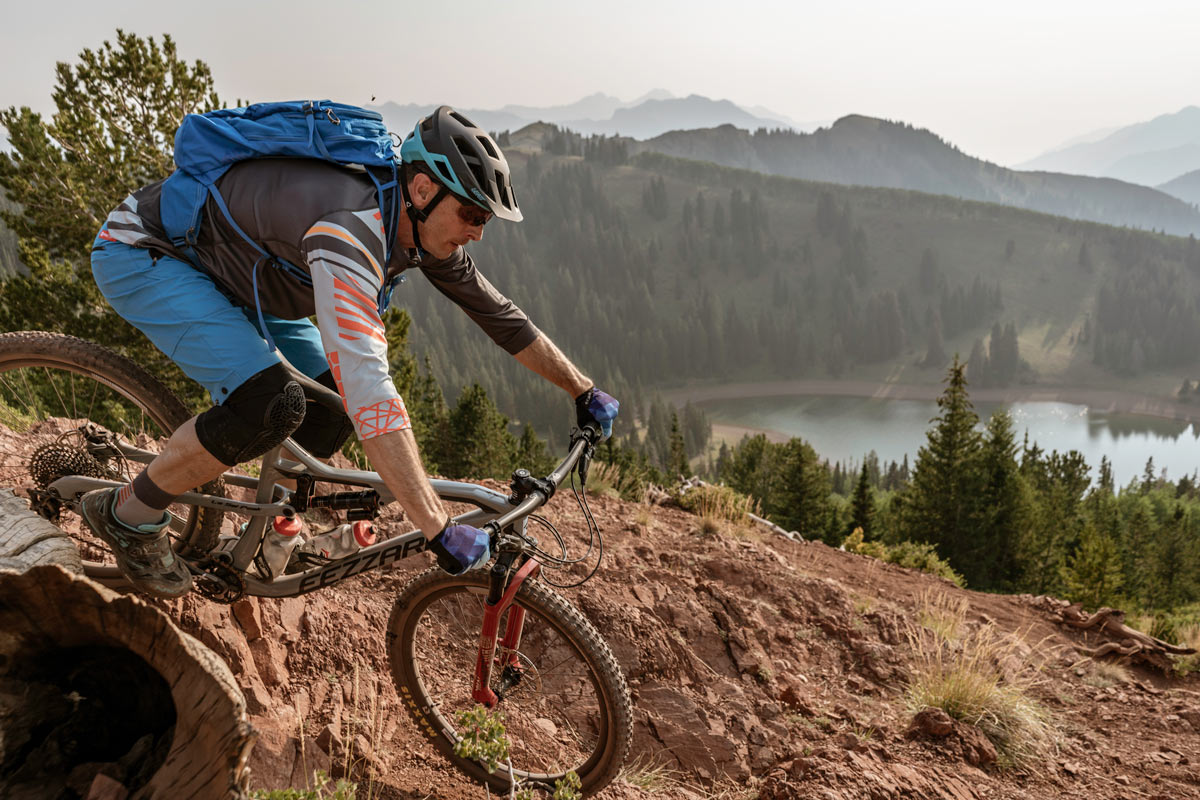
Back to the geometry. Despite my initial concerns, I ended up really liking it. The bike fits the longest dropper seatposts, which gets the saddle way down and out of the way, making it very easy to drop your butt off the back. During normal riding, I was still sitting a bit more forward than I’d like, but on the climbs the design really shone.
The combing prowess also comes partly from the short fork offset, something more bikes are using because it allows the slack head angle without causing sloppy, slow steering. Here, the overall combination is used to great effect, making the bike easy to whip around and control in the tight twisty stuff, very capable on the descents, and easy to climb. At risk of sounding too glowing about the bike, it’s not just that it can do all of these things, but it actually does all of them quite well.
This was my first time riding a Fezzari, which kinda makes me wonder if I’ve been missing something all these years.
